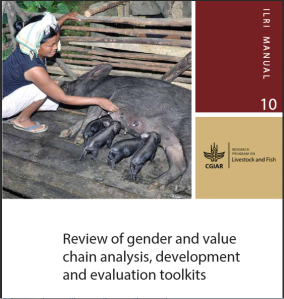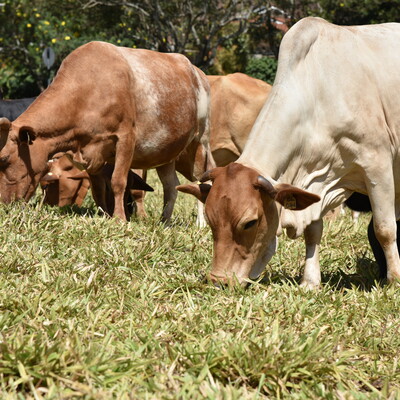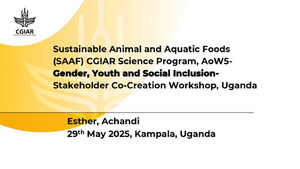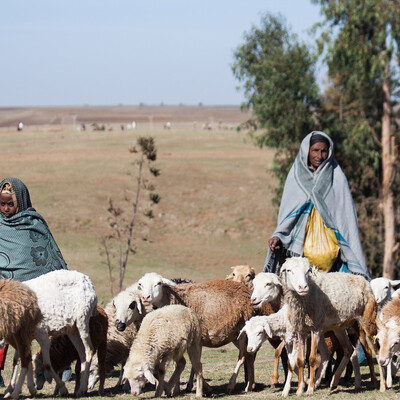
Integrating gender and value chain analysis in agriculture: a guide for gender practitioners and value chain scientists
 Integrating gender and value chains has been a challenge to gender and value chain practitioners, largely due to a number of factors including:
Integrating gender and value chains has been a challenge to gender and value chain practitioners, largely due to a number of factors including:
• These areas of specialization have rarely come together due to lack of or limited knowledge of the potential benefits of such undertaking
• Lack of skill to combine the two areas of specialization
• Literature on gender and literature on value chains are often presented in mutually exclusive spheres of knowledge and practice
To address this challenge, a desk study was conducted by gender scientists from the International Livestock Research Institute (ILRI), to document an annotated bibliographic review of published tools and approaches that have been used in gender and value chain analyses. The study constituted a review of existing literature and tools on gender and value chain analysis to produce a manual. The manual is intended to inform researchers and practitioners undertaking gendered value chains analysis and development in crops and livestock on tools that have been used in gender and value chain analyses.
The review documented past work on tools and approaches that have been used in gender analysis of crop and livestock value chains., It therefore, serves as an annotated guide to existing materials that discuss gender and value chain analysis in crops and livestock. The guide aims to increase understanding of the influence of gender relations on roles of different actors and on interactions among actors within and across various nodes of value chains.
A gender-sensitive value chain approach increases visibility of men’s and women’s roles in various nodes and gender specific barriers to entry and opportunities for growth. Some documented barriers include low access to markets owing to cultural seclusion of women, reduced income control by women with increased commercialization and women’s lower access to technology. These barriers influence the level of entry in nodes/value chains and an actor’s capacity to compete with other actors.
The guide highlights three broad recommendations for consideration in the design and use of value chain analysis tools:
- Value chain analysis must be gendered to capture the different roles, opportunities and constraints for men and women
- Results of gendered value chain analysis must be used not only in designing value chain interventions (such as selecting the most appropriate value chain or target group) but also in guiding project implementation and in informing monitoring and evaluation systems
- Gendered value chain analysis should be undertaken by persons with sound knowledge in gender at the micro, meso and macro level.



















